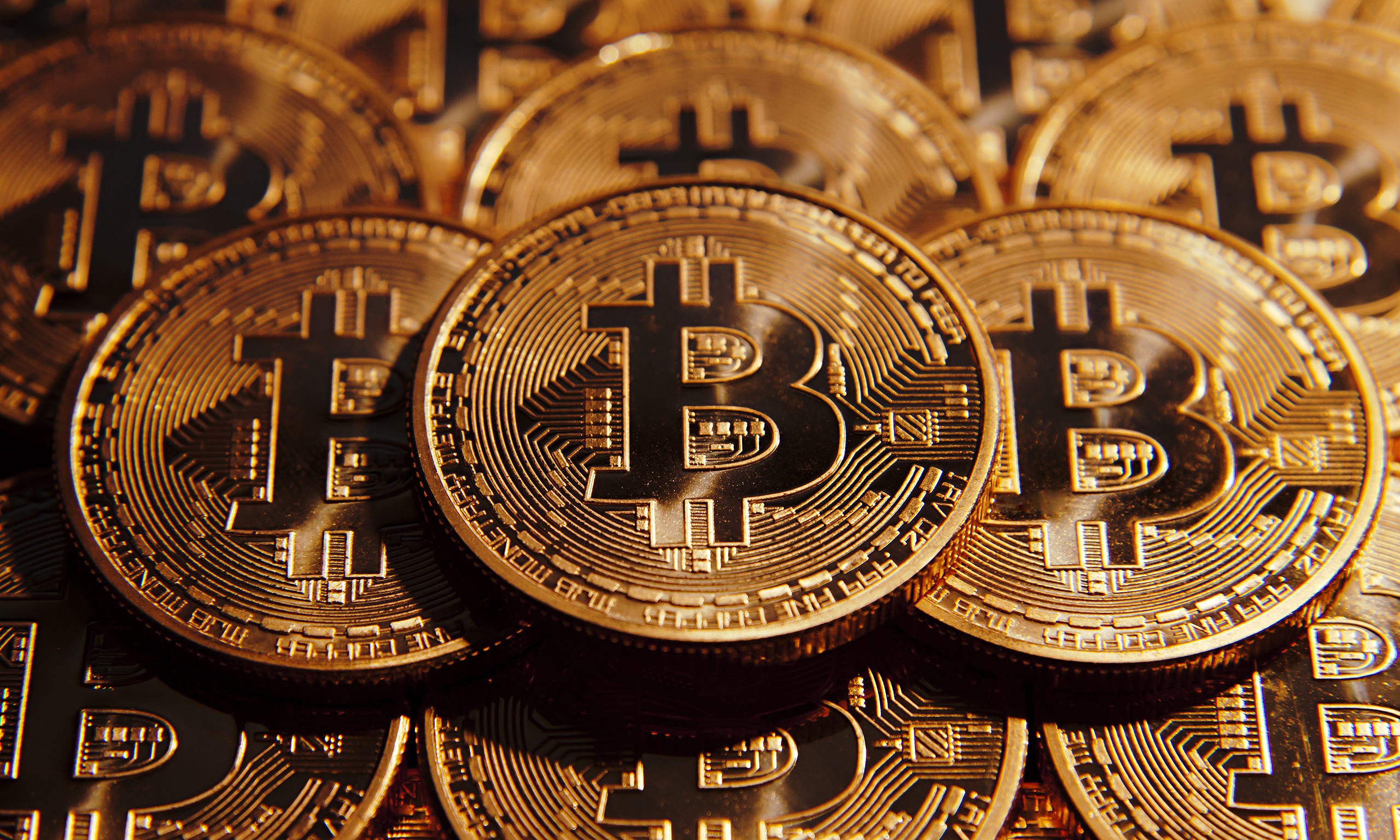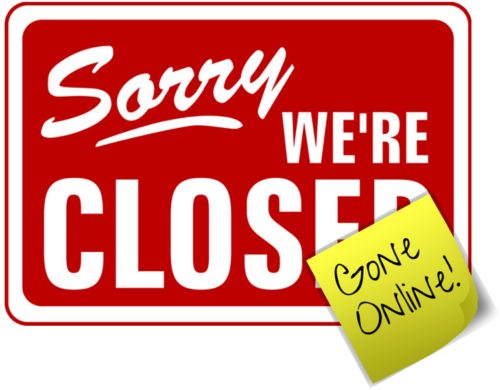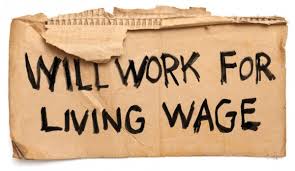
Chart courtesy of Felix Richter, Statista.com https://www.statista.com/chart/9454/retail-space-per-1000-people/

Recent studies of senior managers have shown that being blindsided by a disruption is the largest unresolved concern in strategy development today. That fear is too often real because disruption typically begins where it is least visible to management- on the fringes of the existing target markets. And, once the disruption “pirate ship” is sighted on the horizon, not only is it probably too late, but companies react poorly.
Sadly, given the risk profile and limited experience in innovation, these are often sustaining innovations which are swept aside by the wave of disruption.
A very large example is when Microsoft fell behind in the  mobile market in 2014 and purchased Nokia, a weak player in mobile phones to get access to this market. The joint project, the Lumia phone, failed to catch on and Microsoft’s share fell by 50%- fail. Cisco tried to catch up with the photography trend by acquiring Pure Digital, the maker of low cost Flip cameras. Unfortunately, shortly after the acquisition, the high-resolution sensors included in smartphones took photography to a new level. Bye, Flip! Trend monitoring would have predicted this natural evolution as a high risk threat.
mobile market in 2014 and purchased Nokia, a weak player in mobile phones to get access to this market. The joint project, the Lumia phone, failed to catch on and Microsoft’s share fell by 50%- fail. Cisco tried to catch up with the photography trend by acquiring Pure Digital, the maker of low cost Flip cameras. Unfortunately, shortly after the acquisition, the high-resolution sensors included in smartphones took photography to a new level. Bye, Flip! Trend monitoring would have predicted this natural evolution as a high risk threat.
To anticipate external changes, marketing departments have embraced big data as a powerful tool to help companies identify new markets and consumer preferences. These tools use the past to predict the short-term future which is reasonable in a steady market. The problem is that big data cannot accurately anticipate dynamic disruptions.
But, you and your staff can.
Let us do an opportunity assessment for your organization. For less than your annual gym cost, or auto insurance premium, we could likely identify some good opportunities your blinders are hiding. Read my Assessment Page to learn more.
Adam Hartung, Create Marketplace Disruption

Recent studies of senior managers have shown that being blindsided by a disruption is the largest unresolved concern in strategy development today.
That fear is too often real because disruption typically begins where it is least visible to management- on the fringes of the existing target markets. And, once the disruption “pirate ship” is sighted on the horizon, not only is it probably too late, but companies react poorly.
Some research of corporate responses to disruption has shown that most companies ignore the threat, fortify existing positions or attempt to buy innovation. The first choice is not an option for an ongoing business. Fortification through distribution changes, product model proliferation and discounting only buys some additional time while wasting resources. Once a disruption enters the market, there’s little time for organic innovation efforts so companies often make acquisitions attempting to buy innovation. Sadly, given the risk profile and limited experience in innovation, these are often sustaining innovations which are swept aside by the wave of disruption.
A very large example is when Microsoft fell behind in the mobile market in 2014 and purchased Nokia, a weak player in mobile phones to get access to this market. The joint project, the Lumina phone, failed to catch on and Microsoft’s share fell by 50%- fail. Cisco tried to catch up with the photography trend by acquiring Pure Digital, the maker of low cost Flip cameras. Unfortunately, shortly after the acquisition, the high-resolution sensors included in smartphones took photography to a new level. Bye, Flip! Trend monitoring would have predicted this natural evolution as a high risk threat.
To anticipate external changes, marketing departments have embraced big data as a powerful tool to help companies identify new markets and consumer preferences. These tools use the past to predict the short-term future which is reasonable in a steady market. The problem is that big data cannot anticipate dynamic disruption.
But, you and your staff can.
As a key input to your next strategy workshop, use trends! As a start, gather info from the people closest to your market and further using Porter’s five force model. See my articles on Scenarios to expand these trends to actionable goals.
What’s on your company’s radar today?
We are here to help as your coach on trends and innovation. We bring years of experience studying trends, organizations, and how to implement. We bring nimbleness to your strategy, and help you maximize your ability to execute.
Go the www.adamhartung.com and view the Assessment Page. Send me a reply to this email, or call me today, and let’s start talking about what trends will impact your organization and what you’ll need to do to pivot toward greater success.

There has been a lot of press about Millennial entrepreneurs the last 2 years. Young folks – mostly boys – dropping out of high school to start their own businesses at ages as young as 15. One of these, Noah Miller, who started a sports web site at 15 and later a creative agency asked to join my network on Linked-in. Then he asked me to look into the topic of young entrepreneurs and see what lessons we could learn.
Ben Pasternak liked gaming, and he liked apps. So at 15 he wrote a game-like app and put it on iTunes. 1.3million downloads later he was a young superstar. Since then he’s created two more apps (Flogg and Monkey.) His young hobby led to building strong programming skills, which when linked to identifying what appeals to Millenials turned into apps people really use.
George Matus started flying drones at age 12. He loved it so much he started modifying drones, and building his own. He published videos of his exploits on YouTube, and convinced drone makers to let him be a tester. After 6 years of working on Drones he now has his own Peter Thiel funded company making drones. So far no products on the market, but he is working at it.
Whether iOS apps or drones will be a long-term career is hard to say. But by building strong skills in new technologies with large markets and high growth rates these fellows created business opportunities. You don’t have to be a Millenial to do that.
Collecting sneakers is a remarkably big market. Most older folks would call it a fad, thinking nobody will collect sneakers for long. But, it doesn’t really matter if a trend is going to be long-lived, or not, if you are willing to jump in and help push the trend along.
Fifteen year old Ben Kapelushnik liked sneakers. He wanted money to buy more. So he started buying multiple pairs of collectible sneakers and selling the “extra” pairs at a profit. To grow he networked with sneaker sellers to figure out how he could get in line early and buy many pair. Then he networked hard as he could to find associations with big time sneaker collectors, like rappers and other creative artists. Now he has a business buying and selling sneakers. How long will the fad last? Who knows – but Ben is making money by taking advantage of a hot trend.
Connor O’Neil saw the same phenomenon. He thought “why don’t I go source things people want?” So he created a web site where buyers can request he source sneakers, T-shirts and other items. He then searches the web, sourcing the items manually and with bots that will make instantaneous purchases of hard to find items. He charges customers a fee to find what they want. By meeting customer needs for trendy items, he finds an opportunity for profit.
At 16 Casey Adams started networking on Snapchat, Facebook, Twitter and other social media. After he built up a following of several thousand followers he began offering them t-shirts and wristbands. Pretty soon he was generating $5k/month in revenue. While many older folks still think social media, and Snapchat in particular, is a time-waster, Casey is making money on the obvious trend toward all things social. He’s leveraging his social network to sell things – and teaching other people how to do the same.
Are Bitcoins long-term currency? Will crypto-currency replace things like Dollars and Euros? Most older generation folks don’t think so, and view this as another fad. But Erik Finman saw the trend at age 12, and started buying Bitcoins. A few trades later and he turned $1,000 into $100,000. A few more trades and Finman had a stash worth over $1,000,000. Are Bitcoins the next Tulip bulbs? You can research the economists for opinions on that. But as long as the trend is growing, Erik Finman is making money.


Peter Szabo was only 12 when he used a Google search to identify ways to make money on the internet. He discovered making Facebook ads for affiliates could pay off – in pennies at first, but as volume rose these became dollars. Since so few older people knew how to manage a Facebook ad budget, by age 18 he created an on-line agency focused on maximizing value (and return) for Facebook advertising. You don’t have to be a Millennial to recognize the growth of new platforms and help people use them to make money.
Today anyone can claim to be “great” at anything using the web. There are so few genuine ways to measure quality and results when it comes to anything on the web that if you say it enough, and find enough testimonials, you can be very convincing.
Noah Miller started a sports web site at age 15 using a group of writers he amassed via Twitter connections. Sports Crave had some success with USAToday and Google before Noah closed it at age 17. Based on his claims of great success he’s now promoting his new creative agency, Colour Medium, which has nothing more than a flash page. But the web allows Noah to position himself at the forefront of creative.
Benji Taylor at age 18 has opened a new on-line creative agency named Next Exit focused on art for the music industry. By forging relationships with known young musicians he has positioned his agency at the top of the creative spectrum for his target customers. Given how fast musicians come and go in the limelight, who knows how long his testimonials will stand up. But as long as people know the name of those who know his name he is leveraging those associations to crown himself the king of that industry.
Eighteen year old Josh King Madrid, known as Jet, has built a business on seemingly nothing more than a lifestyle. It is wholly unclear if Jet has ever actually created a profitable business selling anything physical or digital. But what he has done is convince lots of Millenials that he knows the lifestyle they want to lead, and he can tell them how to lead it. So now, largely without any clear source of how he obtained any knowledge about succeeding at business, he is proselytizing how young people can be independent, self-actualized and living the “Jet Set” lifestyle at his events. Jet is one of the best descriptions of how self-promotion can succeed in today’s social-media world, leading people to believe they should listen to you primarily because of the image you portray.
There is precious little to support the grandiose success claims of most Millennial entrepreneurs. They claim huge revenues and wealth, but in most cases it is impossible to prove their claims, and most support comes down to number of followers, or testimonials of some celebrity. But, that does not mean we can’t learn from what they did to achieve their current fame:
I remember the student counsel President of my school, Mr. Popularity, who dropped out of college to open a string of pizza shops. He received ample praise and publicity for his young entrepreneurial success. But after a few setbacks the pizza shops failed, he took work as a salesman for a liquor distributor, became an alcoholic and lost his family. I was glad he found success early, and saddened that he wasn’t the wunderkind many people foisted upon him.
Life is not a one round fight. It will be interesting to see who among these, if any, go on to do great things in business, politics or another arena. While they are full of chutzpah today, life has a way of throwing many derailing curves into everyone’s path. But…
…that does not mean their early success can’t teach us some important lessons that can be applied, regardless of our age.

Originally posted: May 31, 2017
On the day after Memorial Day Amazon stock hit $1,000/share — a new record high. Amazon is up about 40% the last year. It’s market capitalization doubles Wal-mart. And the vast majority of investment analysts expect Amazon to rise further.

Amazon competes in dozens of international markets, as do many on-line retailers, yet the ‘Amazon Effect’ is far greater in the USA than anywhere else. And there’s a good reason — America is vastly over-served when it comes to traditional retail.

Chart courtesy of Felix Richter, Statista.com https://www.statista.com/chart/9454/retail-space-per-1000-people/
America is enormously over-built with retail space
Looking at square feet of retail space per 1,000 people, this infographic shows that, adjusted for population size, the USA has 8x the retail of Spain, 9x the retail of Italy, 11x the retail of Germany, 22x the retail of Mexico, 51x the retail of China and 400x the retail of India! Overall, this is remarkable. I’ve been to all of these countries, and in none did I feel that I was unable to buy things I needed. Clearly, the USA has had such a robust retail sector that it has dramatically over-expanded – with individual stores, suburban strip malls, elaborate horizontal malls, vertical urban malls and multi-floor urban retail complexes far outpacing the needs of American shoppers.
All these stores created a very competitive retail environment. This competition, and the lack of any sort of national value added tax (VAT,) kept prices for most things in America among the lowest in the world. Simultaneously according to the Department of Labor, Retail is the third largest employer in America. Couple that with the enormous wholesale distribution networks of warehouses and truck fleets — and selling things becomes the country’s largest employer — even bigger than the sum total of all federal, state and local government employees .
Additionally, retail has produced the largest local taxes of any industry, combining local sales taxes with property taxes, which has funded schools and public works projects for decades. And this retail space has helped drive demand for all kinds of support services from utilities to maintenance.
U.S. retail consumers are tremendously over-served, and the market is set to collapse
But now retail is wildly overbuilt. Organic demand for all retail grows about equal to population growth, so about 3%/year. But retail real estate grew far faster since World War II as developers kept building more malls, and large retailers like Sears, KMart, Walmart, Target, Lowe’s and Home Depot built more stores. Now demand for products through traditional retail is declining. People are simply ordering on-line.
Net/net, America’s consumers are now over-served by retailers. There is too much space, and inventory. And now that store-to-home distribution has faded as a problem, with multiple carriers offering overnight service, people are increasingly happy to avoid stores altogether, greatly exacerbating the overcapacity problem. Thus, the ‘Amazon Effect’ has emerged, where stores are closing at a rapid rate and many retailers are failing altogether leaving vast amounts of empty retail space.
Foreign markets are under-served, and benefit from Amazon’s entry
Contrarily, in other countries consumers were to some extent under-served. They actually dealt with local stock-outs on desirable items. And frequently lived in a world with a lot less product choice. And, generally, international consumers expected to travel farther to shop at the few larger stores, malls and urban shopping centers with greater selections.
In those countries local economies became far less dependent on retail real estate for jobs — and for taxes. Most have little or no property taxes as deployed in the USA. Additionally, rather than adding a local sales tax to the price of goods, most countries use some sort of national VAT to collect the tax during distribution. When Amazon starts distributing in these markets it is seen as a good thing! Consumers have more choice, less hassle and often better service. Also, Amazon collects the VAT so no taxes are lost.
Contrarily, American communities could never stop adding retail space. Whenever Walmart or Best Buy wanted a new store, no community leaders turned down the potential local economic gains. But it led to too much space being built for a healthy sector, and certainly far too much given the market shift to on-line retail. Now retail is a classic over-served market, sort of like the need for stagecoaches and livery barns after the railroads were built.
Expect 50-67% of retail space to go vacant within a decade
How much retail space could go vacant in the USA? Just invert the multiples from above. For the USA to have the same retail space as Spain implies an 87.5% reduction, Italy -89%, Germany -91%, Mexico -95.5%. Thus it is not hard to imagine a full 50-67% of America’s retail space to be empty in just 5 or 10 years. Americans would still have 2-3 times the retail space of other developed markets.
There is no doubt Amazon is a good employer, and on-line sales growth will employ hundreds of thousands at Amazon, and millions across the marketplace. Further, most of those jobs will pay a lot better than traditional retail jobs. But there is no sugar-coating the huge impact the ‘Amazon Effect’ will have on local economies and jobs. America is vastly overbuilt and over-supplied by retailers. There will be a huge shake-out, with dozens of retail failures. And there will be enormous amounts of vacant property sitting around, looking for some kind of alternative use. And local communities will find it difficult to meet constituent needs as sales tax and property tax receipts fall dramatically.
As I wrote in my column on February 28, this is going to be an enormous shift. Far bigger than the offshoring of manufacturing. The ‘Amazon Effect’ is automating retailing in ways never imagined by those who built all that retail space. As people keep buying on-line there will be a collapse of retail space pricing, and a collapse of industry participants. Industry players always greatly under-estimate these shifts, so they aren’t projecting retail armaggedon. But in short order the need for retail will be like the need for dedicated, raised-floor computer centers to house mainframes, and later network hubs. It’s just going to go away.

There is a definite trend to raising the minimum wage. Regardless your political beliefs, the pressure to increase the minimum wage keeps growing. The important question for business leaders is, “Are we prepared for a $12 or $15 minimum wage?”
President Obama began his push for raising the minimum wage above $10 a year ago in his 2013 State of the Union. Since then, several articles have been written on income inequality and raising the minimum wage. Although the case to raise it is not clear cut, there is no doubt it has increased the rhetoric against the top 1% of earners. And now the President is mandating an increase in the minimum wage for federal workers and contractors to $10.10/hour, despite lack of congressional support and flak from conservatives.
Whether the economic case is provable, it appears that public sentiment is greatly in favor of a much higher minimum wage. And it will not affect all companies the same. Those that depend upon low priced labor, such as retailers like Wal-Mart and fast food companies like McDonald’s have a much higher concern. As should their employees, suppliers and investors.
A recent Federal Reserve report took a specific look at what happens to fast food companies when the minimum wage goes up, such as happened in Illinois, California and New Jersey. And the results were interesting. Because they discovered that a higher minimum wage really did hurt McDonald’s, causing stores to close. But….. and this is a big but…. those closed stores were rapidly replaced by competitors that could pay the higher wages, leading to no loss of jobs (and an overall increase in pay for labor.)
The implications for businesses that use low-priced labor are clear. It is time to change the business model – to adapt for a different future. A higher minimum wage does not doom McDonald’s – but it will force the company to adapt. If McDonald’s (and Burger King, Wendy’s, Subway, Dominos, Pizza Hut, and others) doesn’t adapt the future will be very ugly for their customers and the company. But if these companies do adapt there is no reason the minimum wage will hurt them particularly hard.
The chains that replaced McDonald’s closed stores were Five Guys, Chick-fil-A and Chipotle. You might remember that in 1998 McDonald’s started investing in Chipotle, and by 2001 McDonald’s owned the chain. And Chipotle’s grew rapidly, from a handful of restaurants to over 500. But then in 2006 McDonald’s sold all its Chipotle stock as the company went IPO, and used the proceeds to invest in upgrading McDonald’s stores and streamlining the supply chain toward higher profits on the “core” business.
Now, McDonald’s is shrinking while Chipotle is growing. Bloomberg/BusinessWeek headlined “Chipotle: The One That Got Away From McDonalds” (Oct. 3, 2013.) Investors were well served to trade in McDonald’s stock for Chipotle’s. And franchisees have suffered through sales problems as they raised prices off the old “dollar menu” while suffering higher food costs creating shrinking margins. Meanwhile Chipotle’s franchisees have been able to charge more, while keeping customers very happy, and maintain margins while paying higher wages. In a nutshell, Chipotle’s (and similar competitors) has captured the lost McDonald’s business as trends favor their business.
So McDonald’s obviously made a mistake. But that does not mean “game over.” All McDonald’s, Burger King and Wendy’s need to do is adapt. Fighting the higher minimum wage will lead to a lot of grief. There is no doubt wages will go up. So the smart thing to do is figure out what these stores will look like when minimum wages double. What changes must happen to the menu, to the store look, to the brand image in order for the company to continue attracting customers profitably.
This will undoubtedly include changes to the existing brands. But, these companies also will benefit from revisiting the kind of strategy McDonald’s used in the 1990s when buying Chipotle’s. Namely, buying chains with a different brand and value proposition which can flourish in a higher wage economy. These old-line restaurants don’t have to forever remain dominated by the old brands, but rather can transition along with trends into companies with new brands and new products that are more desirable, and profitable, as trends change the game. Like The Limited did when selling its stores and converting into L Brands to remain a viable company.
Now is the time to take action. Waiting until forced to take action will be too late. If McDonald’s and its brethren (and Wal-Mart and its minimum-wage-paying retail brethren) remain locked-in to the old way of doing business, and do everything possible to defend-and-extend the old success formula, they will follow Howard Johnson’s, Bennigan’s, Circuit City, Sears and a plethora of other companies into brand, and profitability, failure. Fighting trends is a route to disaster.
However, by embracing the trend and taking action to be successful in a future scenario of higher labor these companies can be very successful. There is nothing which dictates they have to follow the road to irrelevance while smarter brands take their place. Rather, they need to begin extensive scenario planning, understand how these competitors succeed and take action to disrupt their old approach in order to create a new, more profitable business that will succeed.
Disruptions happen all the time. In the 1970s and 1980s gasoline prices skyrocketed, allowing offshore competitors to upend the locked-in Detroit companies that refused to adapt. On-line services allowed Google Maps to wipe out Rand-McNally, Travelocity to kill OAG and Wikipedia to kill bury Encyclopedia Britannica. These outcomes were not dictated by events. Rather, they reflect an inability of an existing leader to adapt to market changes. An inability to embrace disruptions killed the old competitors, while opening doors for new competitors which embraced the trend.
Now is the time to embrace a higher minimum wage. Every business will be impacted. Those who wait to see the impact will struggle. But those who embrace the trend, develop future scenarios that incorporate the trend and design new business opportunities can turn this disruption into a big win.